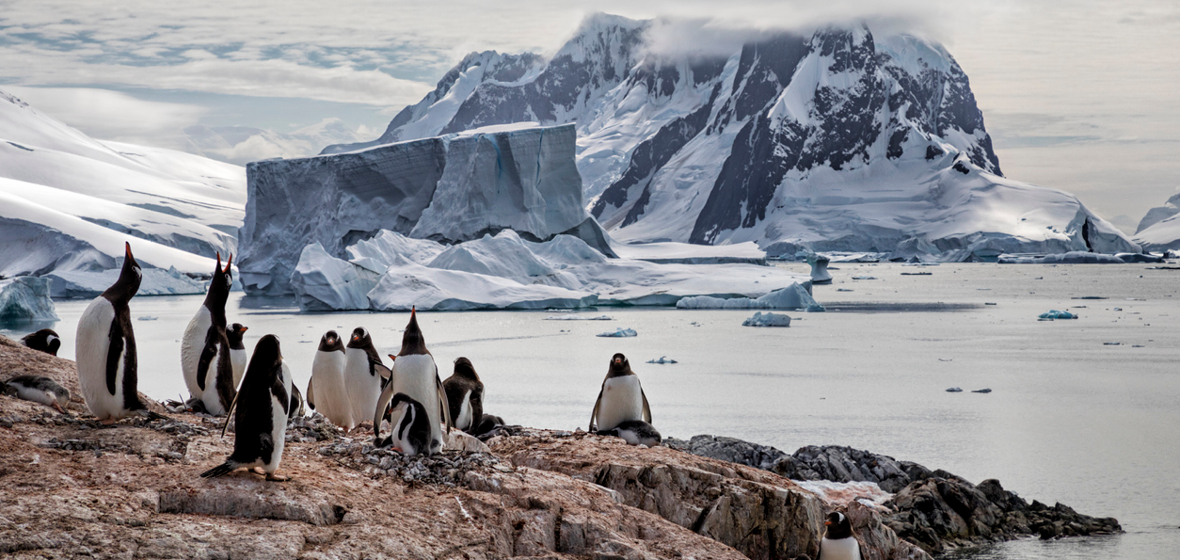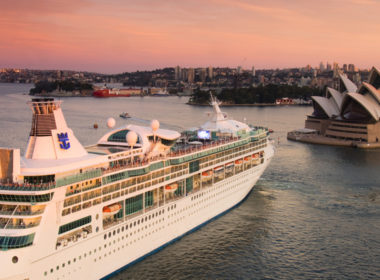Snapshot
- In June this year, the Antarctic Treaty will celebrate its 60th anniversary. The milestone has prompted questions as to whether a treaty negotiated in 1959 is capable of continuing to provide an appropriate governance framework for Antarctica.
- The questions raise issues with respect to the ongoing interests and motivations of the seven Antarctic claimant States, the role of historically prominent non-claimant States such as the United States and the Russian Federation, and the interests of powerful ‘new’ States such as China.
- An additional factor is the impact of climate change and technological advances, which is making Antarctica more accessible resulting in new challenges for Antarctic governance unforeseen in 1959.
Negotiations for the Antarctic Treaty were concluded in Washington on 1 December 1959, and the Treaty subsequently entered into force on 23 June 1961. The Treaty remains as a unique example of an international law instrument that seeks to provide a governance mechanism for a single continent where Australia has very extensive historical and contemporary interests. The Treaty celebrates its 60th anniversary in 2021 at a time when Antarctica, and the polar regions generally, are increasingly coming under the spotlight with respect to their governance.
The Treaty spawned the Antarctic Treaty System (‘ATS’) which is generally considered to encompass the associated international instruments and treaties adopted by the Antarctic Treaty Consultative Parties (‘ATCPs’), including the 1980 Convention on the Conservation of Antarctic Marine Living Resources (‘CCAMLR’) and the 1991 Madrid Protocol on Environmental Protection to the Antarctic Treaty (‘Madrid Protocol’).
Membership of the Antarctic Treaty has also grown from the original 13 parties to a total of 54. Australia was an original party to the Antarctic Treaty and has been a strong supporter of the Treaty and the ATS throughout its lifetime. Australia is also one of seven claimant States in Antarctica, alongside Argentina, Chile, France, New Zealand, Norway and the United Kingdom. The Australian Antarctic Territory (‘AAT’) comprises 42 per cent of the continent. While the Treaty has effectively neutralised the AAT claim, Australia has not relinquished the territory. Three Australian research bases operate within the AAT: Casey, Davis and Mawson. Together they represent a significant Australian commitment to Antarctic science.
In 2021, questions are being raised as to whether a treaty negotiated in 1959 is capable of continuing to provide an appropriate governance framework for Antarctica. The questions raise issues with respect to the ongoing interests and motivations of the seven Antarctic claimant States, the role of historically prominent non-claimant States such as the United States and the Russian Federation, and the interests of powerful ‘new’ States such as China. An additional factor is the impact of climate change and technological advances, which is making Antarctica more accessible resulting in new challenges for Antarctic governance unforeseen in 1959.
Antarctic Treaty
The Antarctic Treaty was adopted during the height of the Cold War. Pivotal to the Treaty being concluded was the agreement that was reached on sovereignty (Article IV) which effectively sought to set aside and neutralise sovereignty issues for the duration of the Treaty. As a result the existing seven claimants were unable to make any new claims or enlarge their existing claims, and potential claimants such as the USA were likewise constrained from their ability to assert claims.
The Treaty also provided for a series of measures that were designed to facilitate the other objective of the Treaty which was to ensure the continent remained a place where scientific research could be freely practised (Article II). The Treaty’s limits were set so as to encompass the continent and the area north up to a limit of 60oS (Article VI). A rudimentary governance regime was provided for by way of a regular meeting of the original parties in addition to those which subsequently joined the Treaty and were able to demonstrate their scientific credentials through the conduct of ‘substantial scientific research activity’. The first meeting of parties that became known as ‘Antarctic Treaty Consultative Meetings’ (‘ATCMs’) took place in Canberra in July 1961 and was held at (Old) Parliament House.
Antarctic Treaty System
The Antarctic Treaty provided a foundation for the subsequent development of the ATS. This initially occurred through the adoption at ATCMs of recommendations which sought to reflect agreed views on a range of matters. Increasingly the parties sought to adopt recommendations dealing with Antarctic environmental and resource issues, and this resulted in agreement being reached on additional instruments. These instruments were the:
- 1972 Convention for the Conservation of Antarctic Seals (‘CCAS’);
- CCAMLR; and the
- Madrid Protocol.
In addition, in 1988 the Convention on the Regulation of Antarctic Mineral Resource Activities (‘CRAMRA’) was also adopted, however this instrument was effectively abandoned in favour of the Madrid Protocol when Australia and France decided to favour a regime for enhanced environmental protection rather than Antarctic mining. This was a major policy and diplomatic initiative of the Hawke government which sought to globally promote Antarctic environmental protection.
In sum, these additional instruments have created a regime for the regulation and protection of Antarctic seals, a regime for the regulation of Antarctic marine living resources including fishing activities and marine protected areas, a mining prohibition, and a regime for the comprehensive protection of the Antarctic environment.
Australian law and Antarctica
There is a little understood body of Australian law that applies in Antarctica, and specifically the AAT. Australia’s AAT claim was affirmed through the Australian Antarctic Territory Acceptance Act 1933 (Cth), and the application of Australian law to the AAT as an external territory was formalised in the Australian Antarctic Territory Act 1954 (Cth). The law of the AAT is a mix of Commonwealth and territory (ACT) law which has rarely been tested before Australian courts. One recurring issue has been coronial enquiries following the deaths of Australian and foreign scientists, and especially whether an Australian coroner would have jurisdiction over the death of a foreign national because of some of the limitations within the Antarctic Treaty.
The conduct by Japan of its whaling program in the Southern Ocean raised very particular challenges for the application of Australian law in Antarctica. The Environment Protection and Biodiversity Conservation Act 1999 (Cth) declared waters adjacent to the AAT as part of the Australian Whale Sanctuary where whaling was prohibited. Japan ignored this prohibition and regularly undertook whaling in the Australian Whale Sanctuary offshore the AAT. Efforts by Humane Society International to enforce the Environment Protection and Biodiversity Conservation Act against Japanese whalers raised particular sensitivities for the Australian government because of a concern that Australia would have been seen to be asserting sovereignty in Antarctica in a manner inconsistent with the Treaty. Federal Court orders were issued against Japanese whalers in 2008 (Humane Society International Inc v Kyodo Senpaku Kaisha Ltd [2008] FCA 3), however these were ignored as Japan did not recognise Australia’s claim to the AAT. Australia eventually took Japan to the International Court of Justice to challenge the legality of Japan’s conduct as being inconsistent with the International Convention for the Regulation of Whaling. In 2014 the International Court ruled in favour of Australia and Japan halted its Southern Ocean whaling program (Whaling in the Antarctic (Australia v Japan: New Zealand intervening) [2014] ICJ Reps 226). These events highlighted how compromised Australian law can be in Antarctica, especially with respect to enforcement against foreign nationals.
Challenges at 60 years
The Antarctic Treaty has been able to respond to a number of political and legal challenges over 60 years. Some of those challenges have arisen due to the relatively limited nature of the Treaty not addressing Antarctic resource or environmental issues. These challenges have been responded to through the negotiation and adoption of additional instruments such as CCAMLR and the Madrid Protocol, however these negotiations also created new tensions. In particular, the conclusion of CRAMRA was the catalyst for a significant backlash. Another significant issue that was addressed during the 1980s was the debate over the ‘Question of Antarctica’ in the United Nations General Assembly. UN members from the Group of 77 bloc sponsored a debate that raised questions over the legitimacy of the ATS arguing that it comprised a closed ‘club’ of States who, at that time, were seeking to conclude an Antarctic mineral’s regime that only they would benefit from. This critique was responded to in the UN by leading Antarctic States, including Australia, and was eventually managed by the increased number of new States that gained ATCP status in the 1980s, and the about turn that resulted in CRAMRA’s abandonment and the adoption of the Madrid Protocol.
A pre-pandemic surge in passenger numbers meant that there have been more visitations to Antarctica than at any other time in its history. This has resulted in a range of challenges relating not only to environmental impact assessment but also pollution arising from increased shipping operations.
In 2021, the principal Treaty and ATS challenges are resource and environmental-related. CCAMLR continues to confront issues associated with illegal fishing, and the enforcement and regulation of a Southern Ocean fisheries regime that neutralises traditional coastal State sovereignty in one of the most remote bodies of water in the world. While mining activities have been effectively set aside, there remains ongoing debate as to whether the mining moratorium may be overturned as a result of a review of the Protocol or the actions of States that choose to act outside of the ATS. Environmental protection and management also remains an ongoing challenge. The ATS has evolved over the years such that these issues now have a central focus not only within the regime, but also in the public consciousness. In this respect it needs to be recalled that the Madrid Protocol designates Antarctica ‘as a natural reserve, devoted to peace and security’ (Article 2).
A related issue arising from another human activity in Antarctica is that of tourism. A pre-pandemic surge in passenger numbers meant that there have been more visitations to Antarctica than at any other time in its history. This has resulted in a range of challenges relating not only to environmental impact assessment but also pollution arising from increased shipping operations. While the Madrid Protocol has a number of provisions capable of regulating tourism, the effectiveness of these measures is dependent upon individual States with their own variable environmental standards and enforcement procedures.
Another major challenge is climate change, however, this is not something that the ATS has oversight of. Nevertheless, this does not mean that there is no role for the ATCPs in particular from taking a lead role in seeking to develop and implement a robust global climate regime with a view to seeking to enhance the protection of Antarctica. In this regard, it can be observed that all parties to the Antarctic Treaty are also parties to the Paris Agreement to the 1992 United Nations Framework Convention on Climate Change. With the United States – a significant polar power – now seeking to exercise renewed global leadership on climate change it can be anticipated more attention will be given to Antarctica.
Future of the Antarctic Treaty and Australia in Antarctica
It is currently fashionable to critique the ATS and speculate whether it will survive due to a combination of geopolitics, and resource tensions and whether it remains ‘fit for purpose’. Much of this debate has been sparked by the global rise of China in tandem with China’s increased engagement with Antarctica and the ATS. It has also been fuelled by suspicions about China’s Antarctic ambitions, which to date have not been clearly articulated. Whether China would seek to leave the ATS in the foreseeable future can only be speculated about. Nevertheless, debate continues as to whether China, or any other party, may seek to initiate a Madrid Protocol review in 2048. Notwithstanding some reports, the Treaty and the mining ban do not come to an end in 2048. Nevertheless if a formal review was undertaken there is the prospect that the Treaty regime could over time unravel.
While 2048 may prove to be an important ‘milestone’ for the ATS, the regime has been able to demonstrate great resilience over the past 60 years. This resilience should not be underestimated, and while the ATS still only has a membership of approximately one quarter of UN member States, it does include all of the Permanent Five members of the UN Security Council, in addition to all the members of the G7 and all but three of the members of the G20. Nevertheless, while the ATS has enjoyed enormous success the global international order is currently experiencing a backlash against some aspects of international law and institutions. This is partly driven by a concern from some States that certain global institutions and mechanisms are no longer appropriate and are in need of reform, modification, or even alternate frameworks. In some instances, this has resulted in States abandoning long established international legal frameworks and institutions to pursue unilateral goals or to support new regimes. It would therefore be inappropriate to become complacent about the ATS and the challenges that it faces. While the ATS currently presents itself as a stable legal regime, the reality is that both the Antarctic Treaty and Madrid Protocol are subject to treaty mechanisms allowing for review of their cornerstone provisions. If this were to occur then Australia would face diplomatic and legal challenges.
Australian policy towards Antarctica has placed a premium on the maintenance of Australian sovereignty and support for the Treaty. This uneasy status quo has been beneficial for Australia. The Australian Antarctic Division (‘AAD’) is currently exploring options for building a permanent aerodrome near Davis Station in the AAT. The AAD asserts this would provide ‘reliable year-round aviation access to Antarctica, support the Australian Antarctic Program for decades to come, enhance our scientific research and Australia’s leadership in the region’ (https://www.antarctica.gov.au/antarctic-operations/travel-and-logistics/aviation/davis-aerodrome/). This aerodrome would be a ‘gamechanger’ for the AAT and represent one of the most significant Australian investments in Antarctica for generations. It would also be a sovereign act consistent with Australia’s claim over the AAT. Exhaustive environmental impact assessments would be required under Commonwealth law prior to any building program commencing. ATS oversight will also occur. There will also inevitably, and appropriately, be extensive debate over the merits of the permanent airstrip, especially in light of the fiscal challenges created by the pandemic and Antarctica’s environmental fragility. The Davis Aerodrome project may well prove to be the next test for Australia and Australian law in Antarctica.





